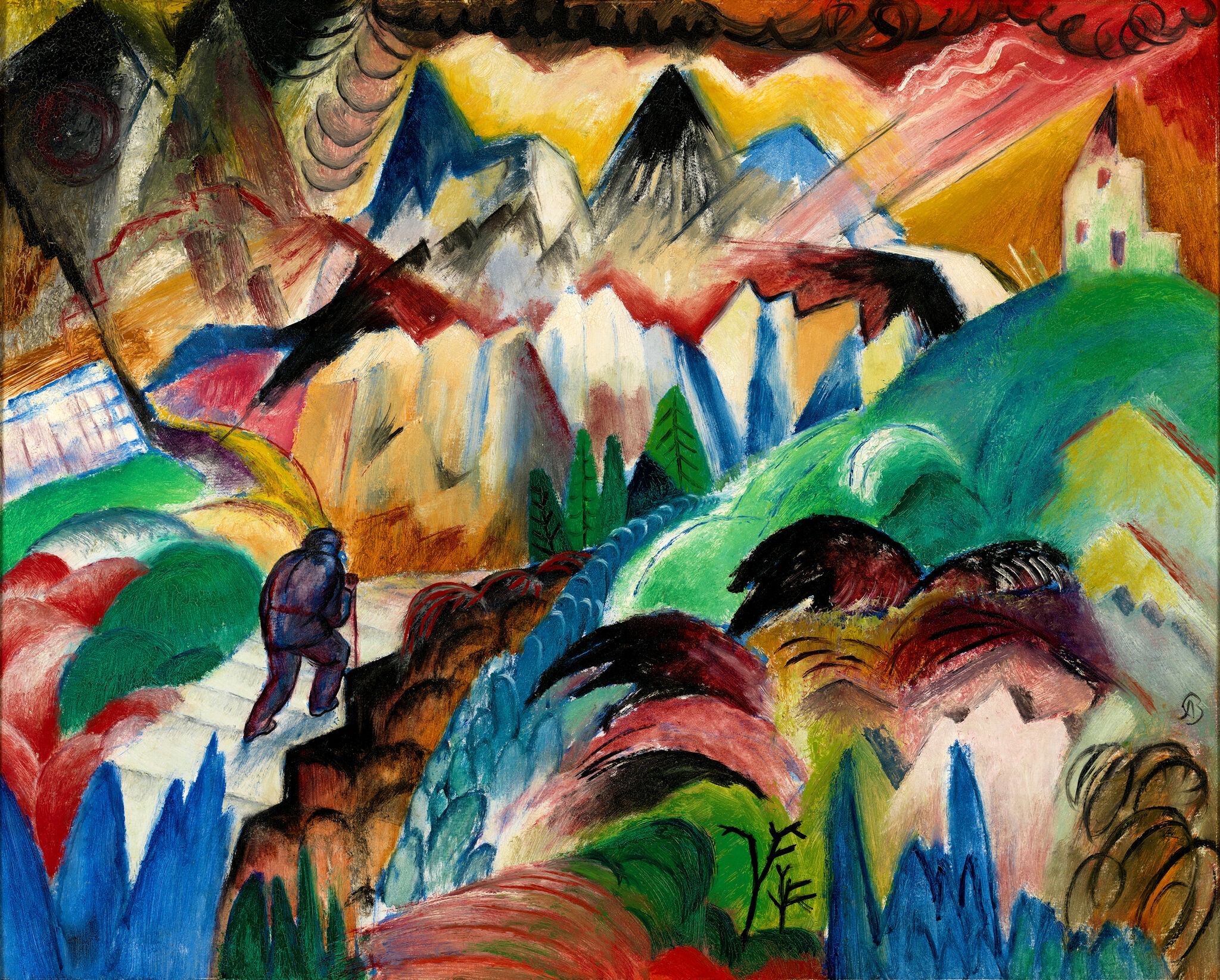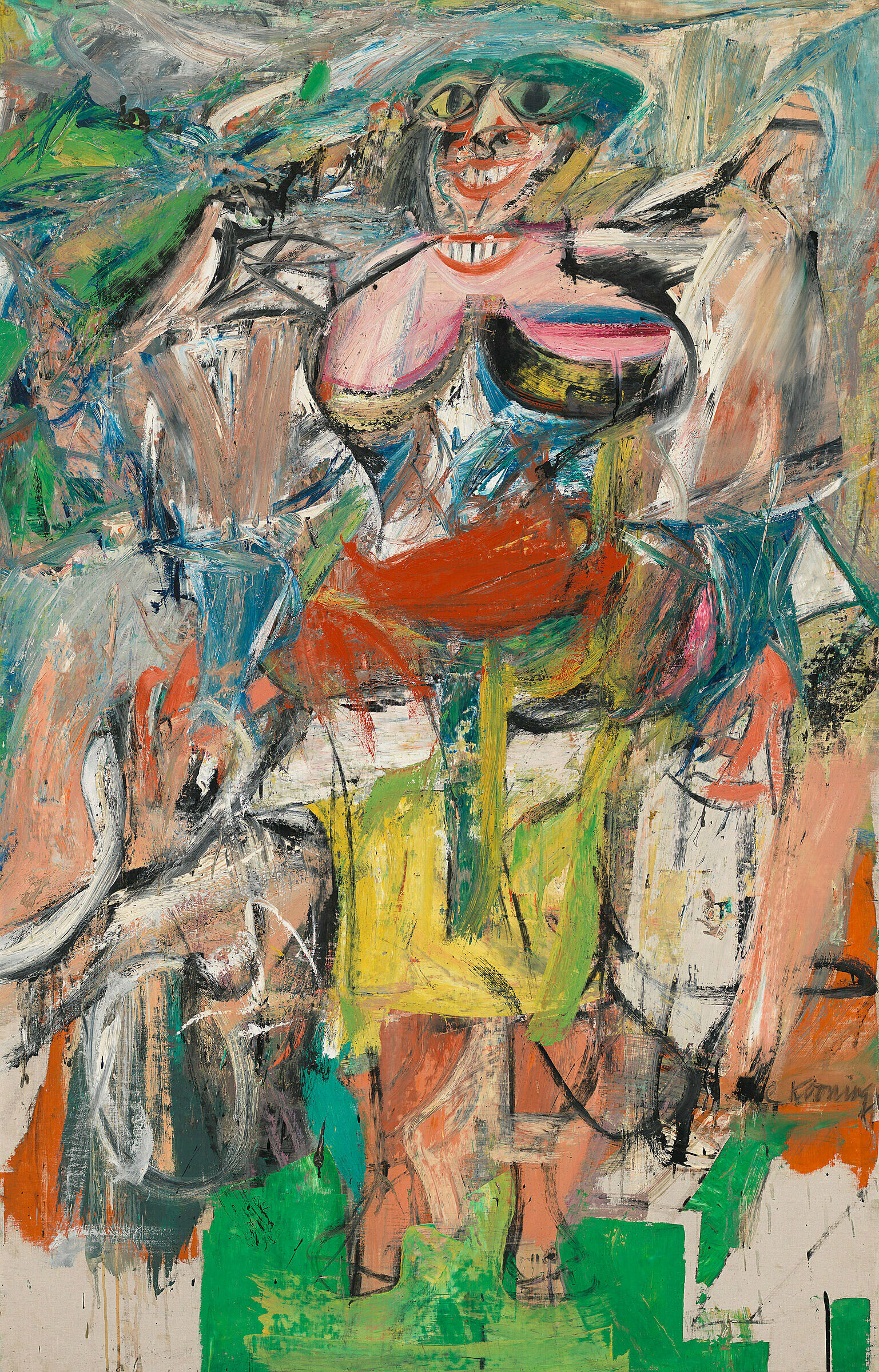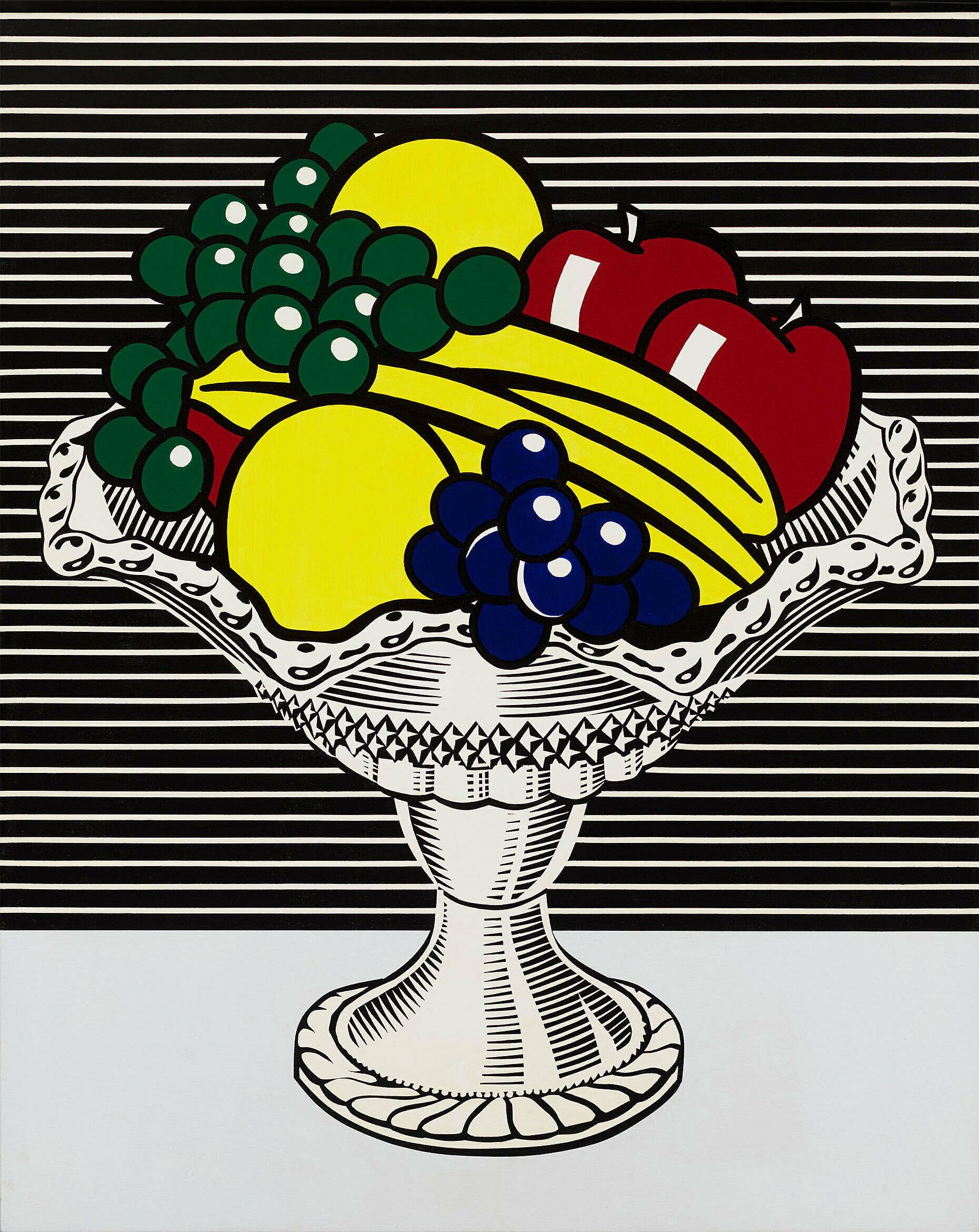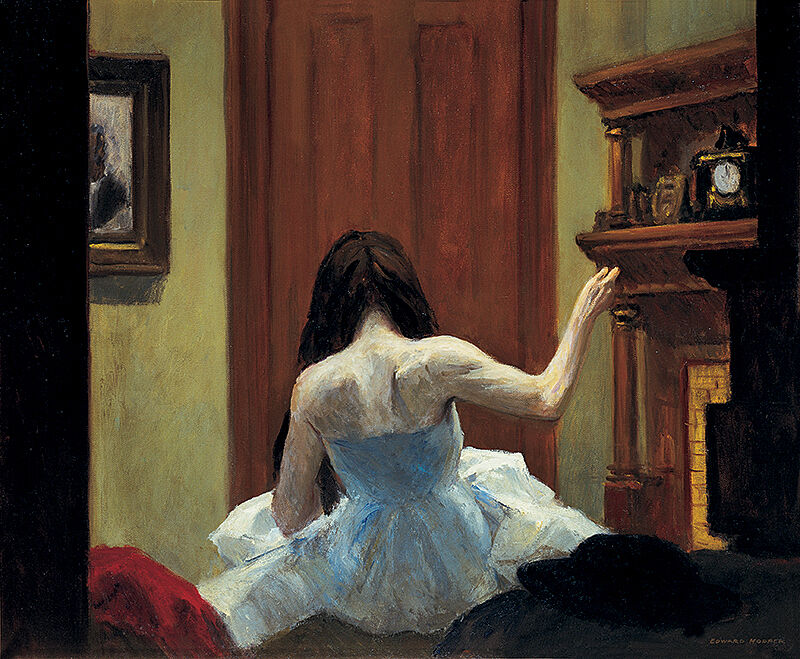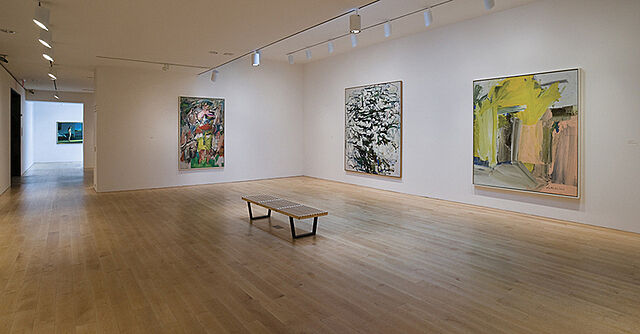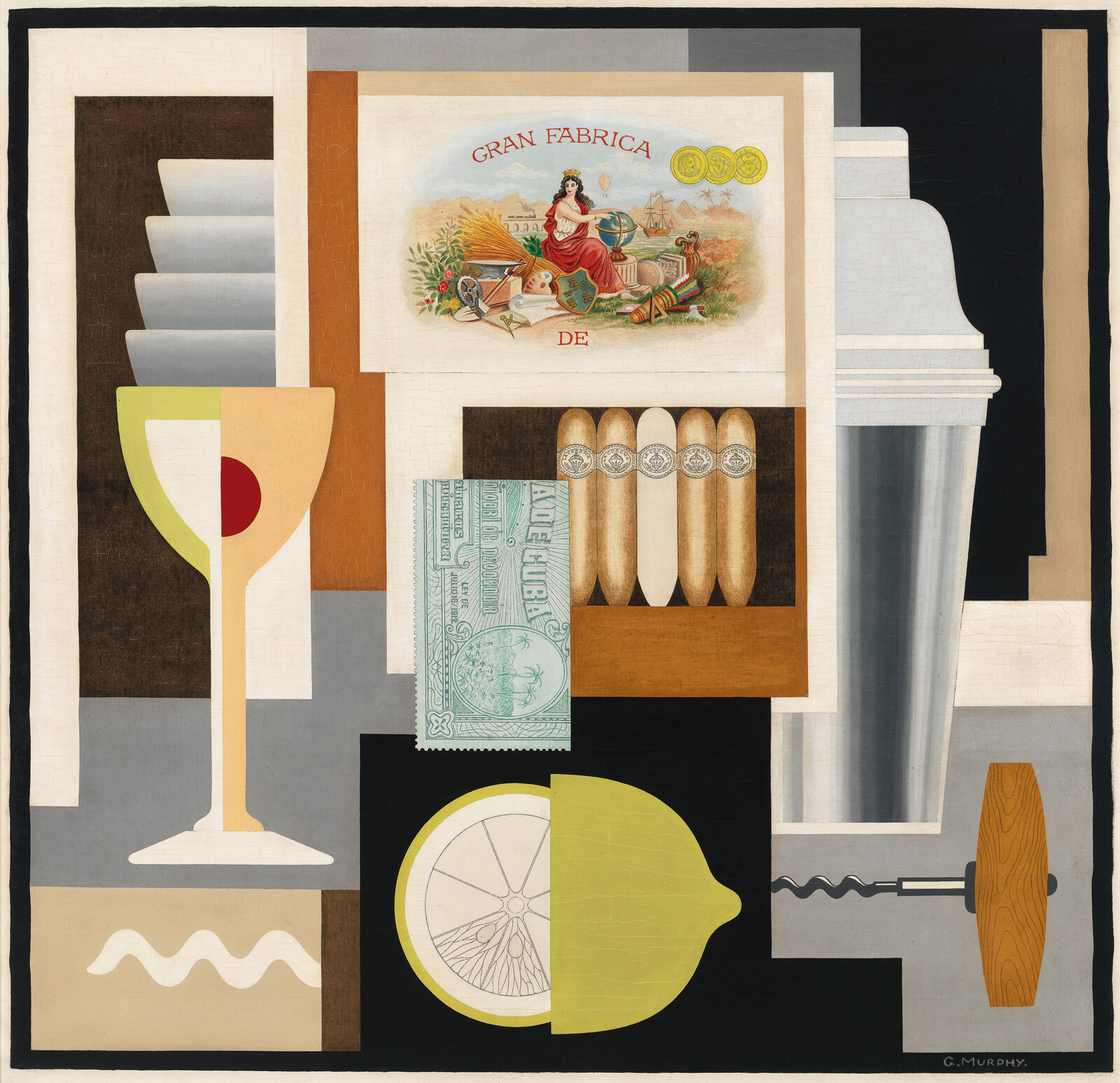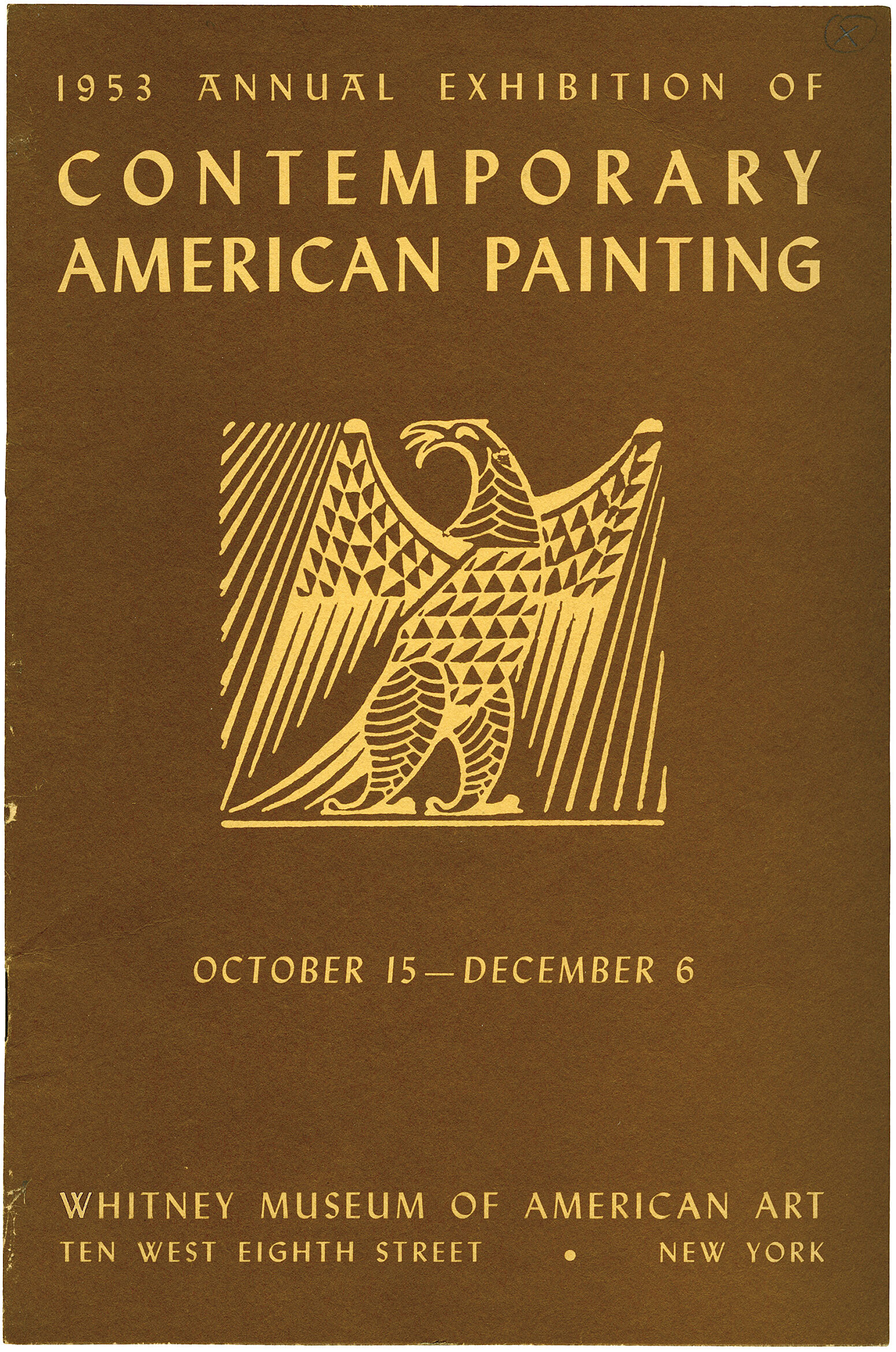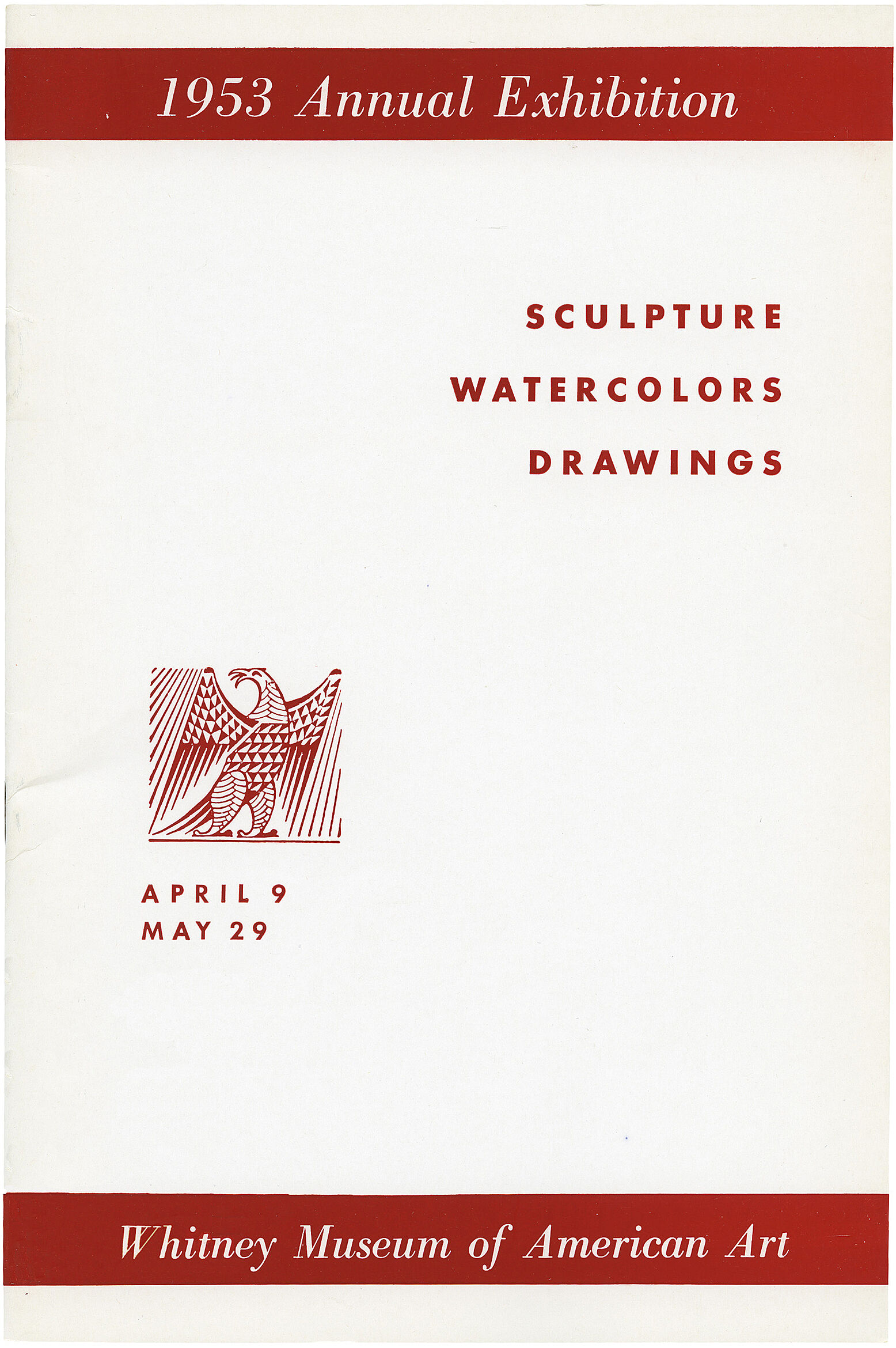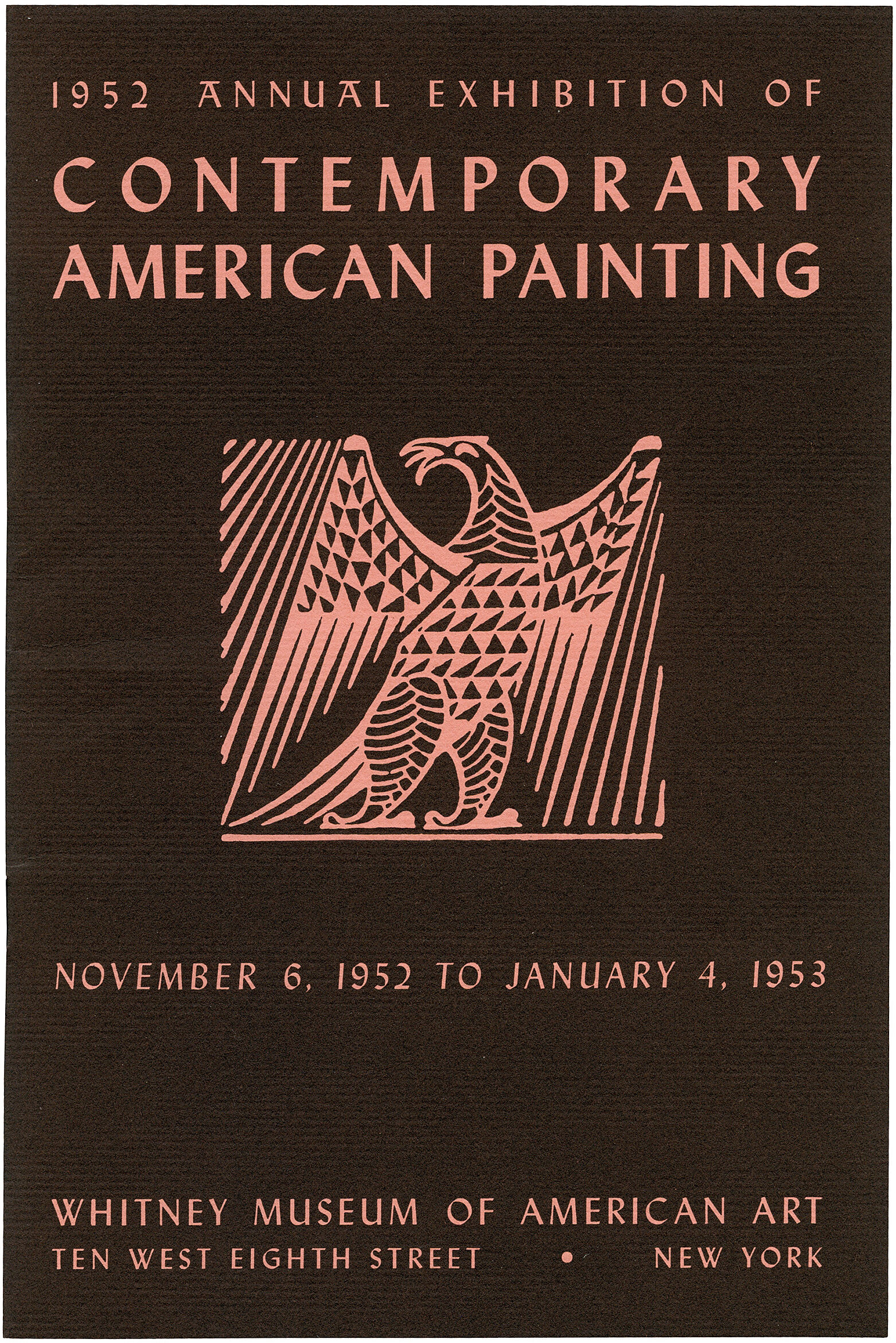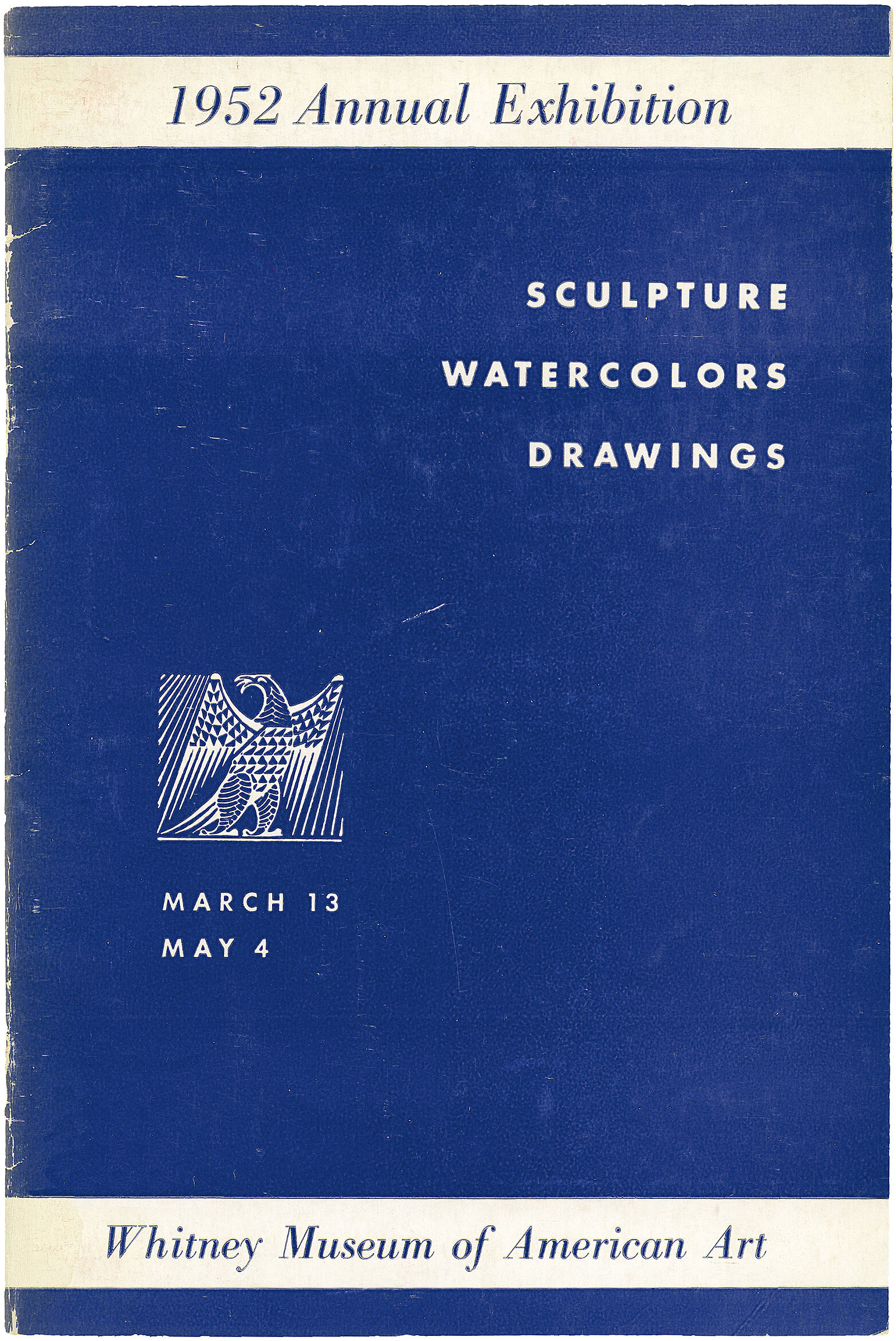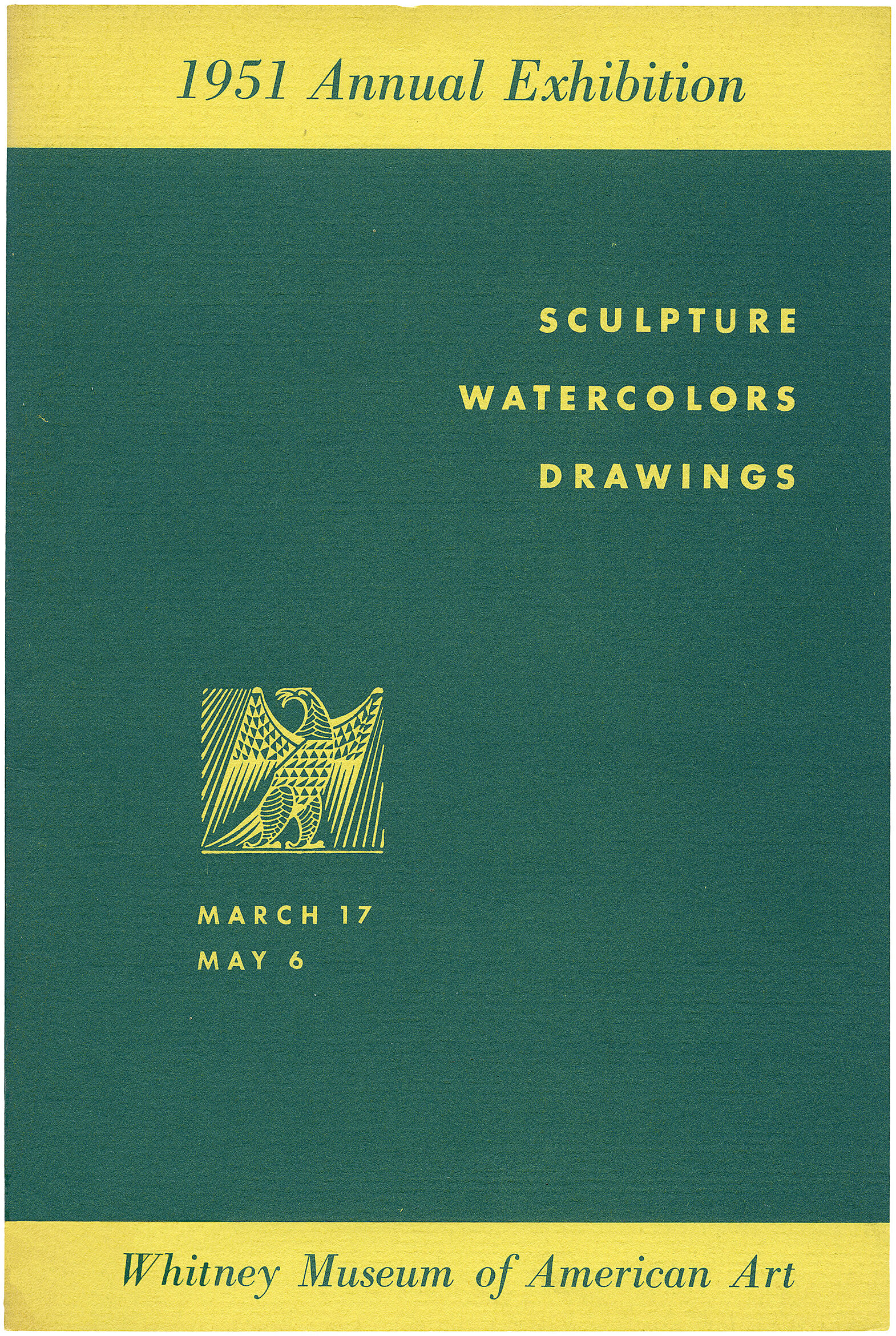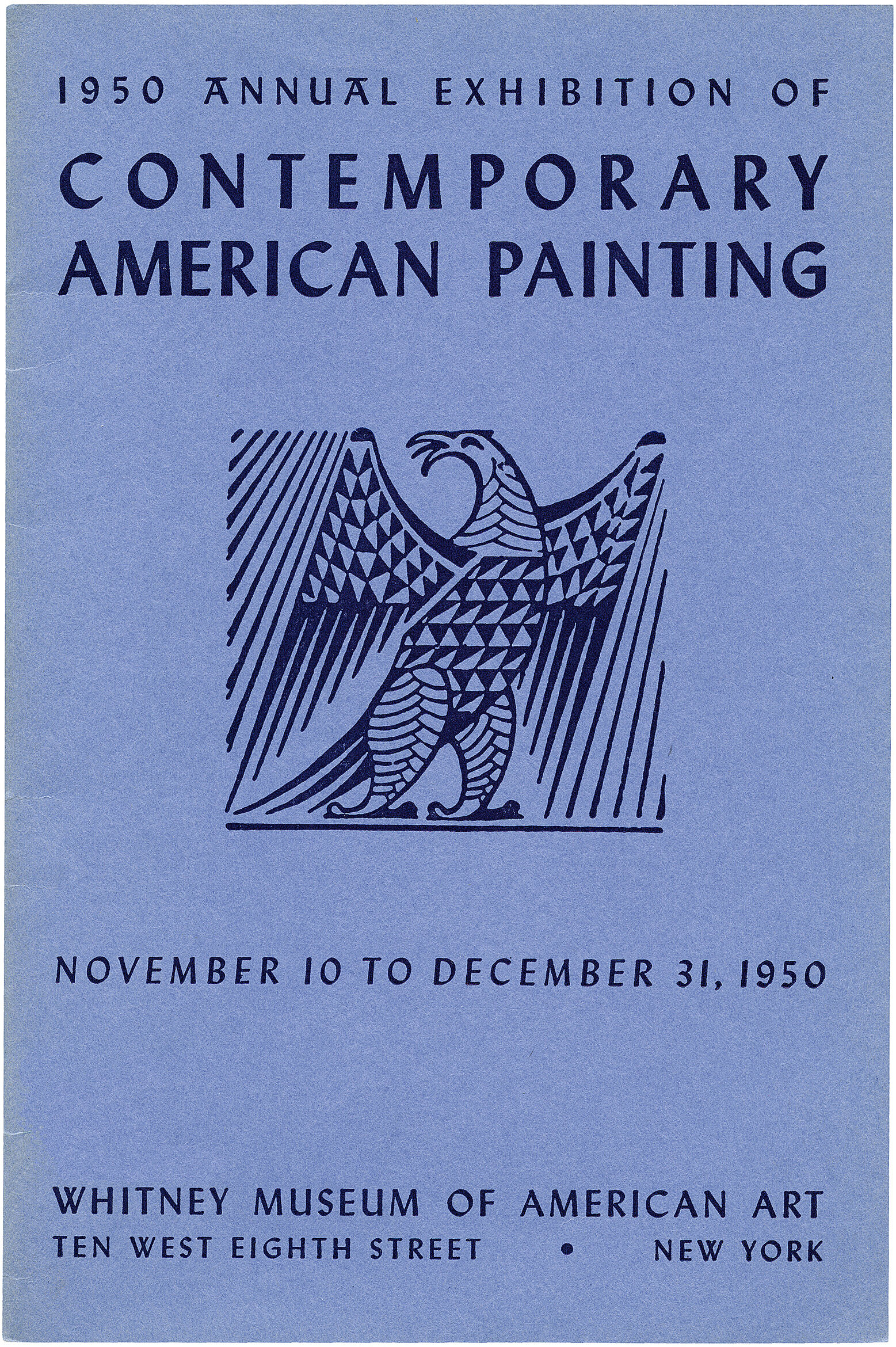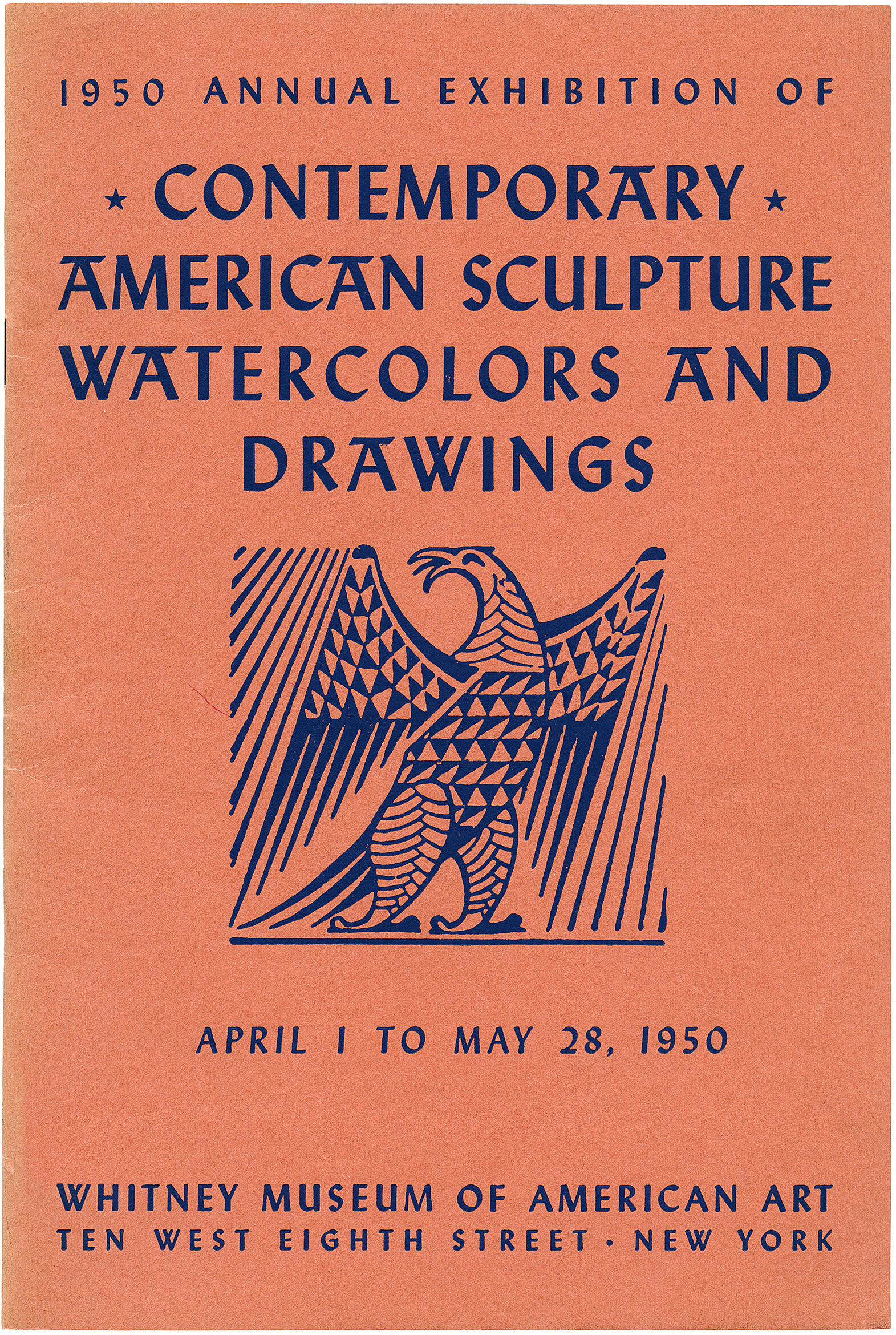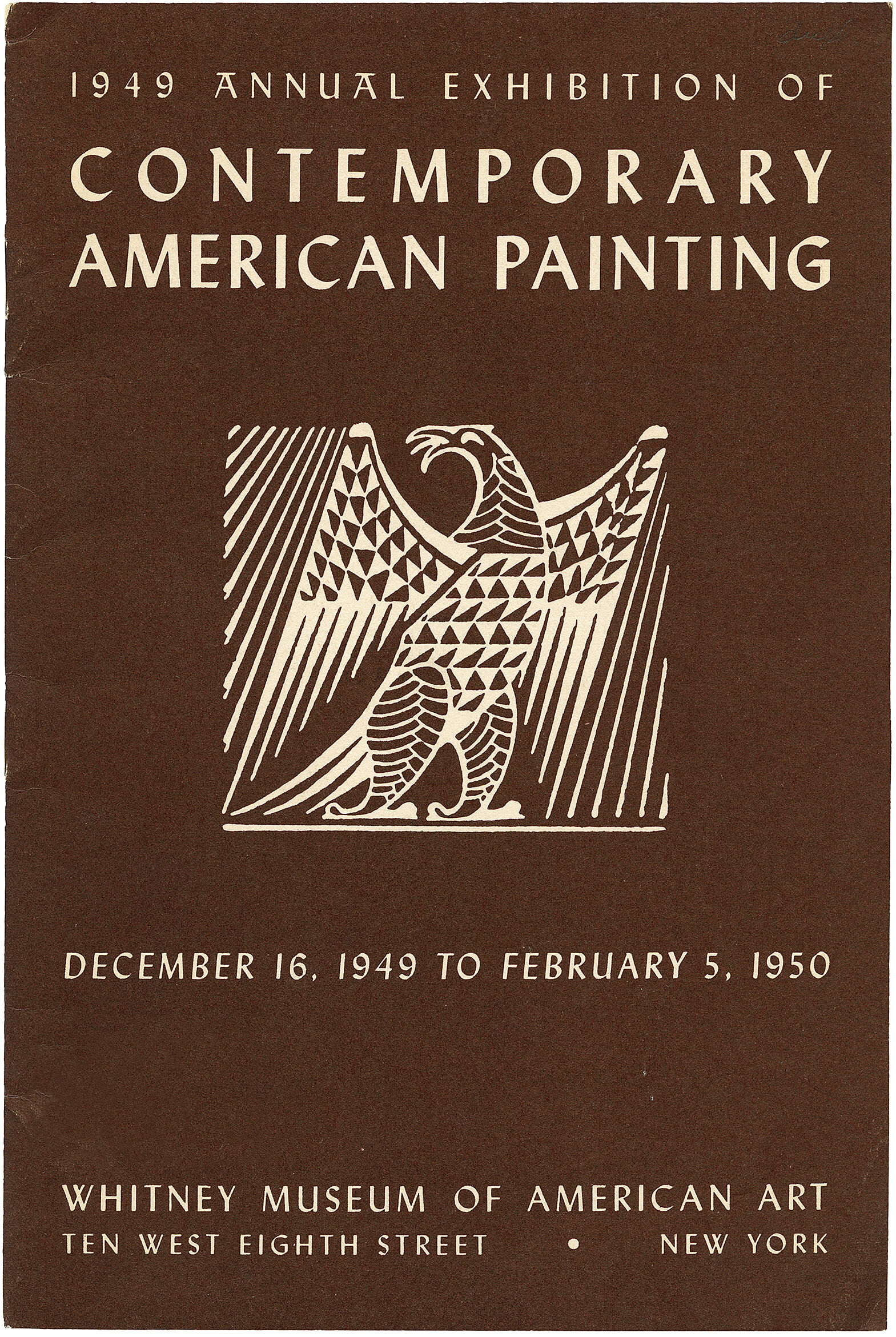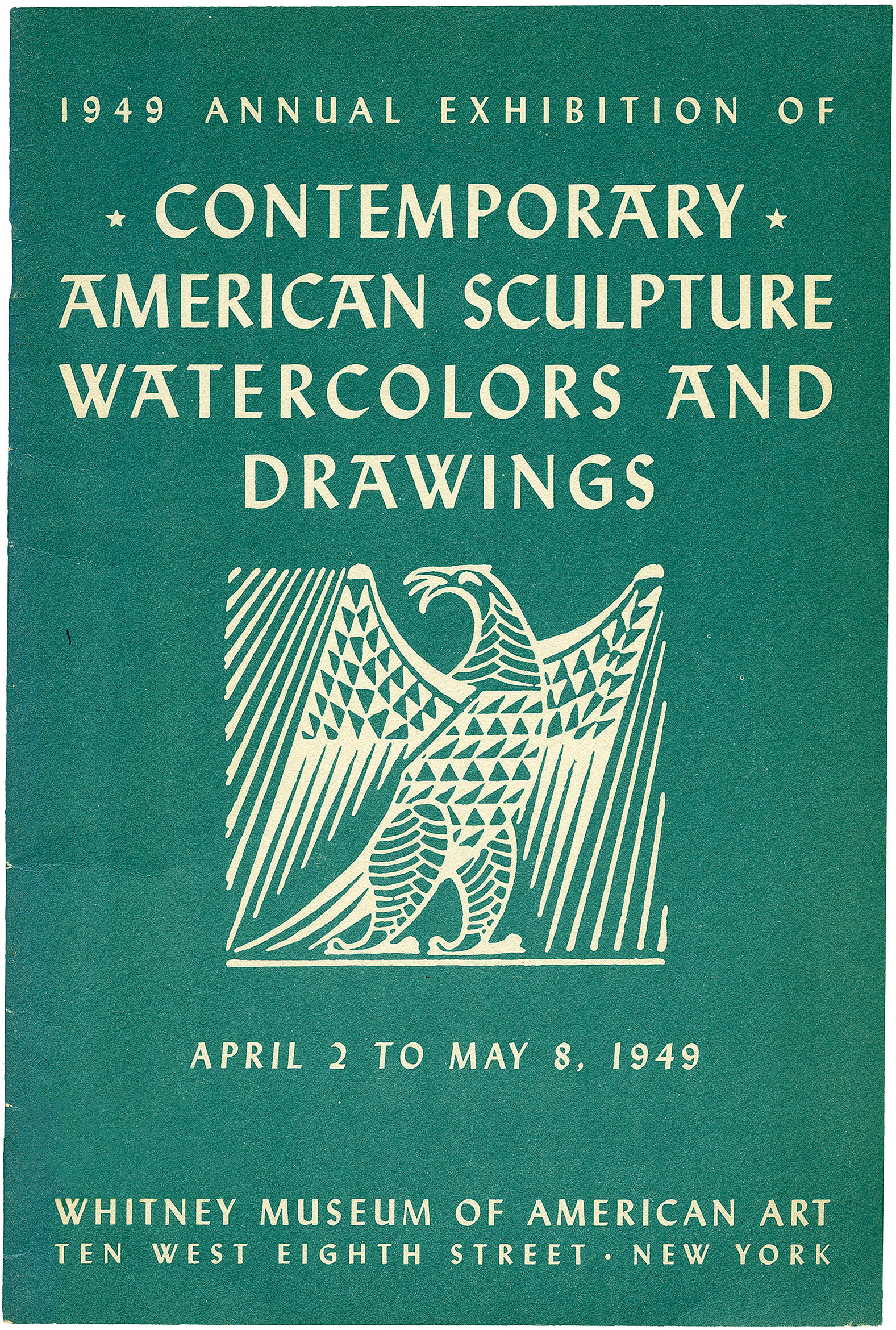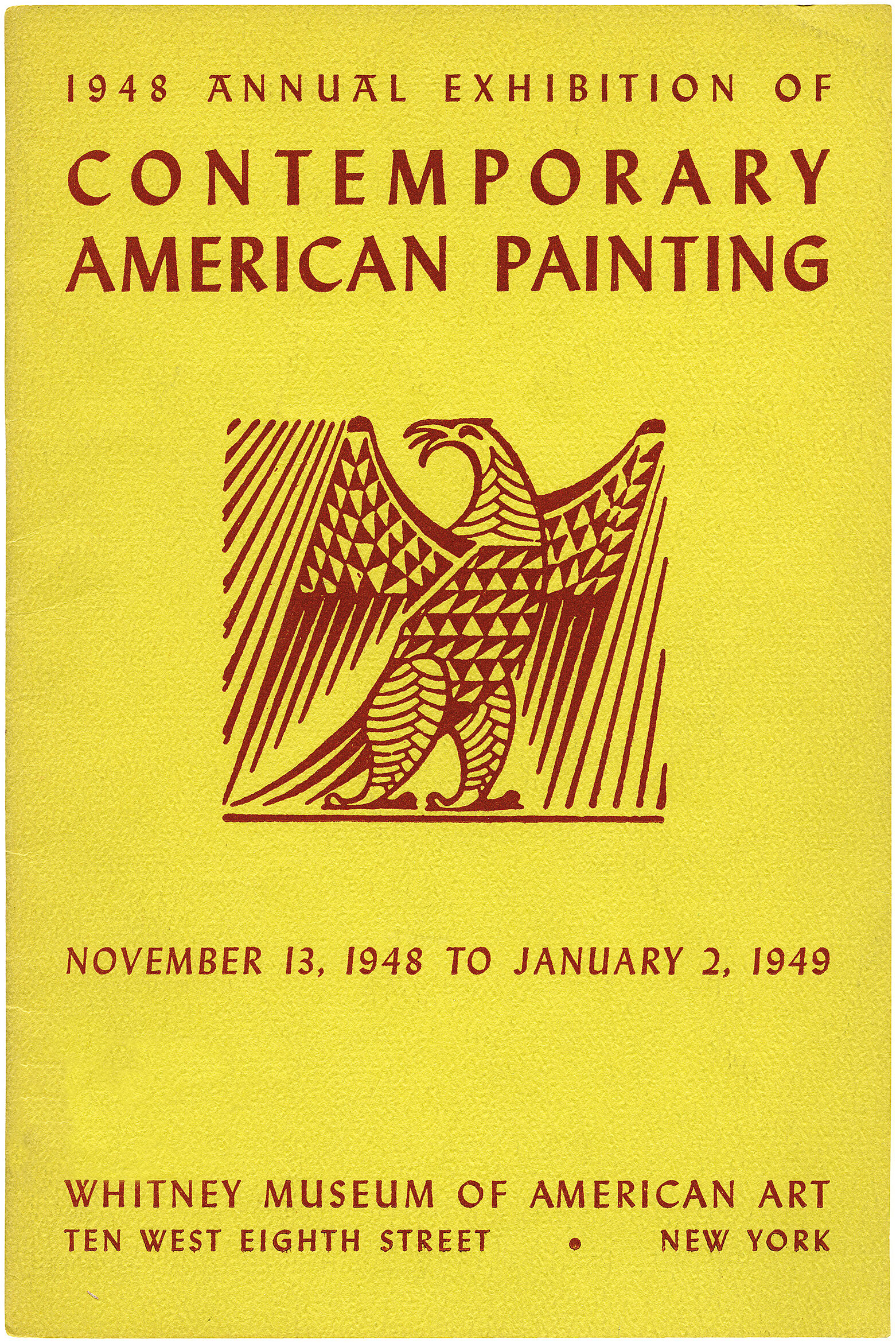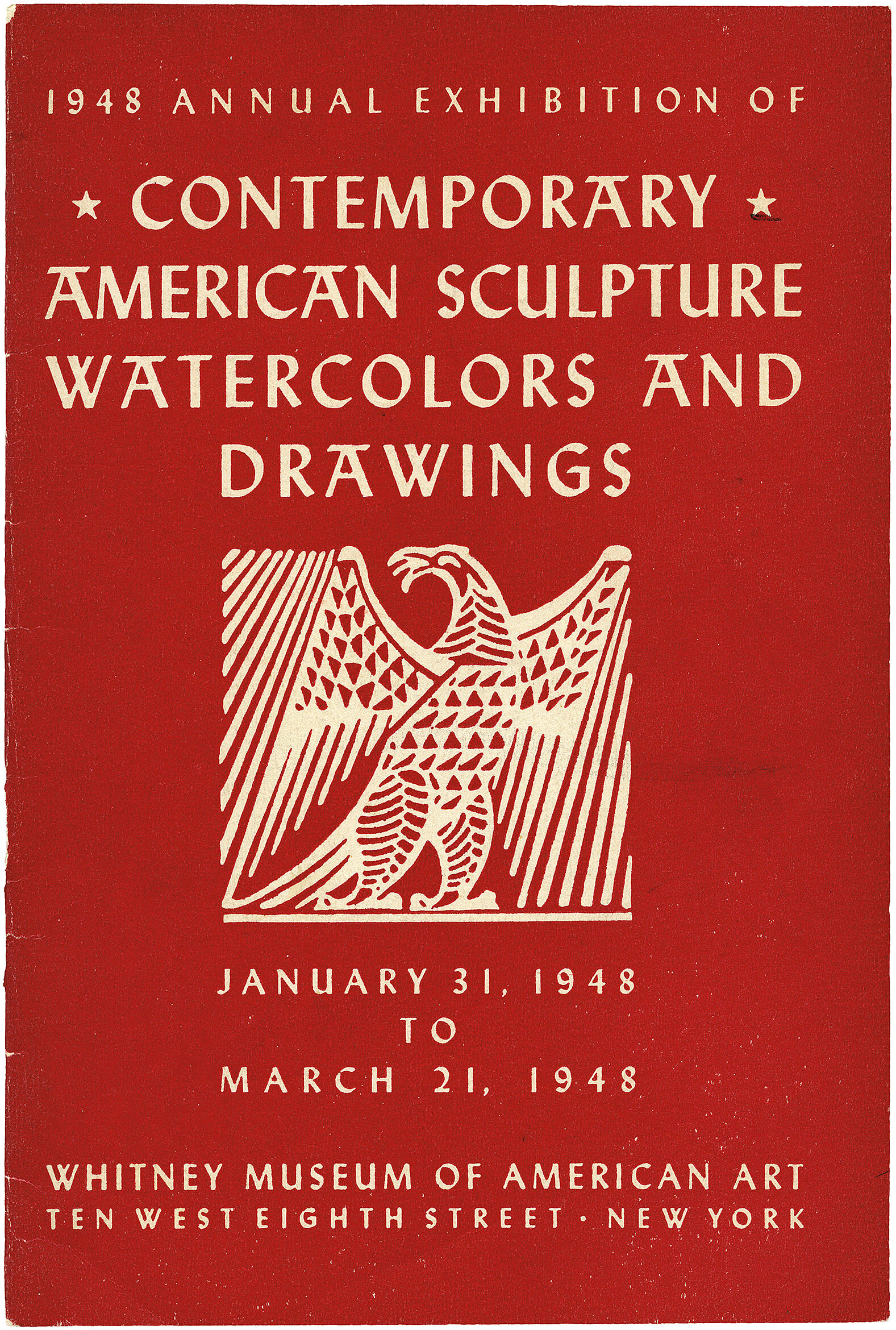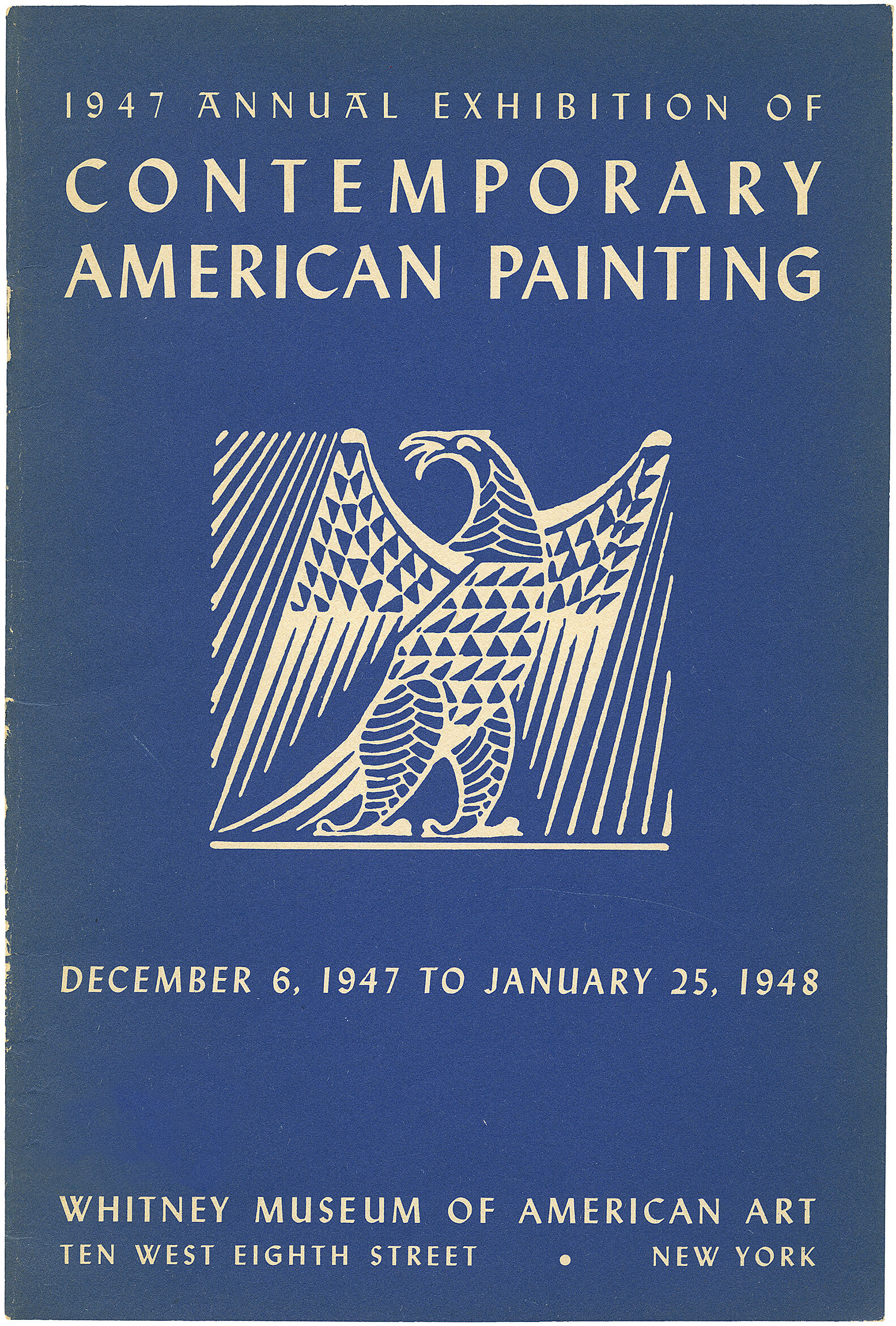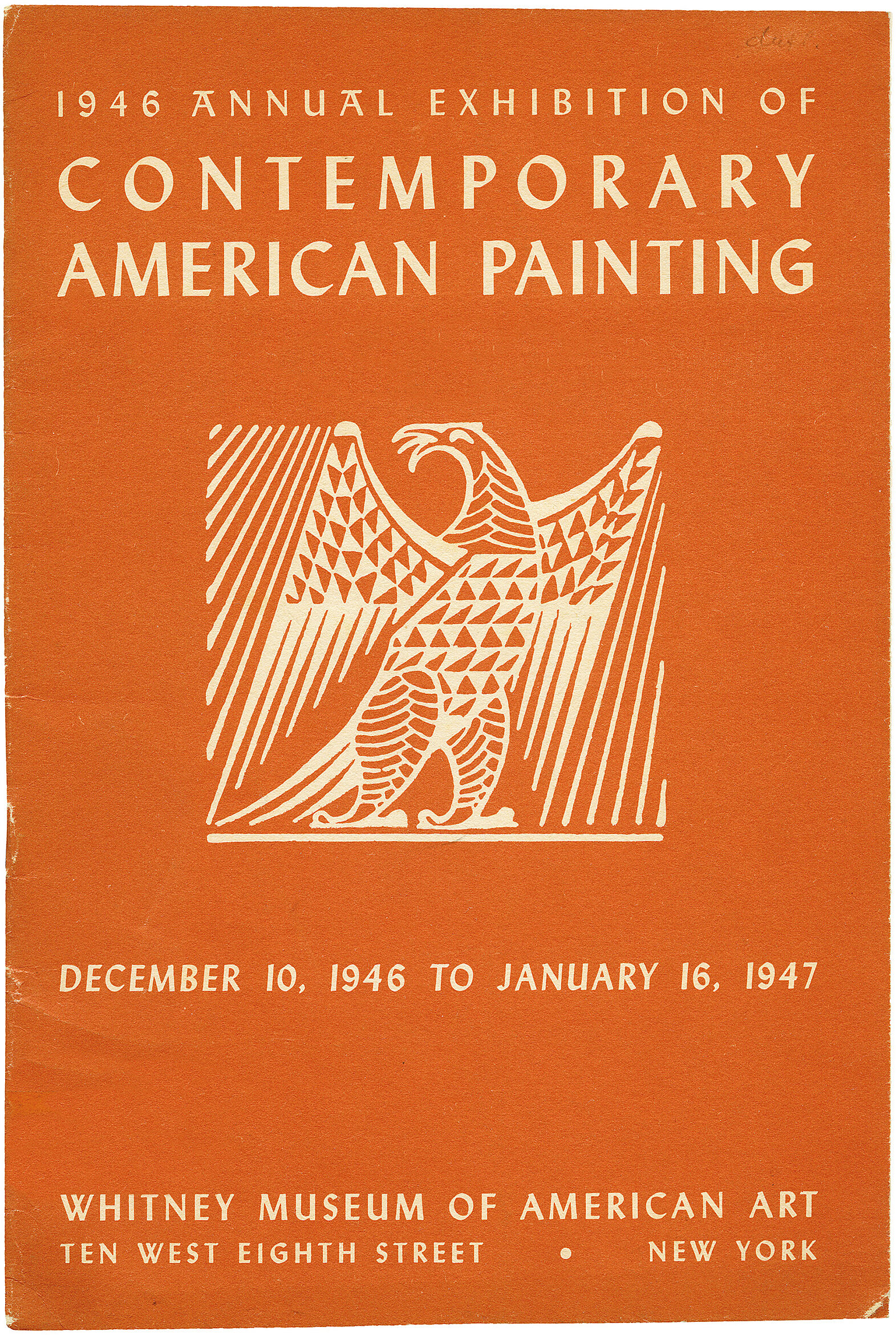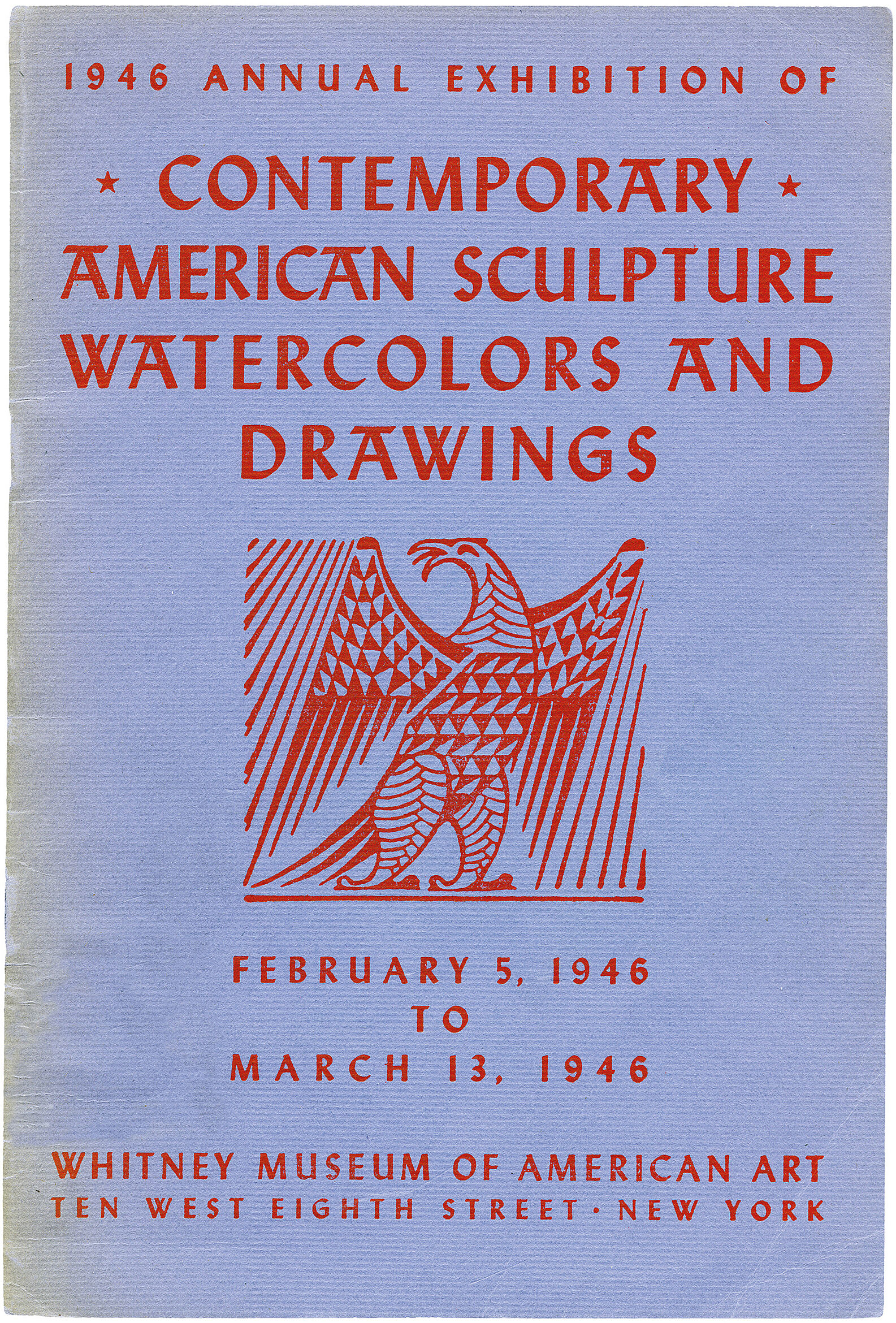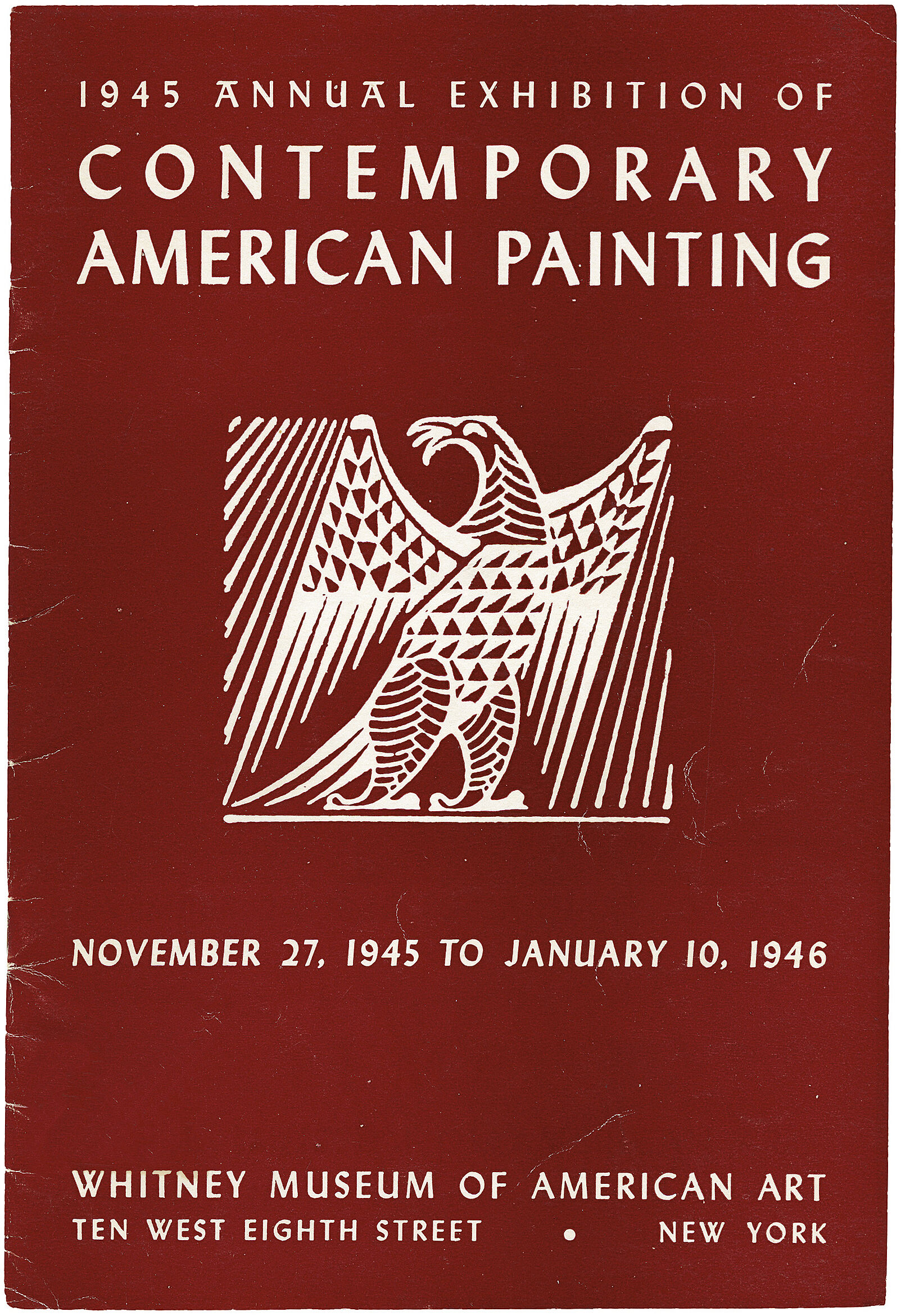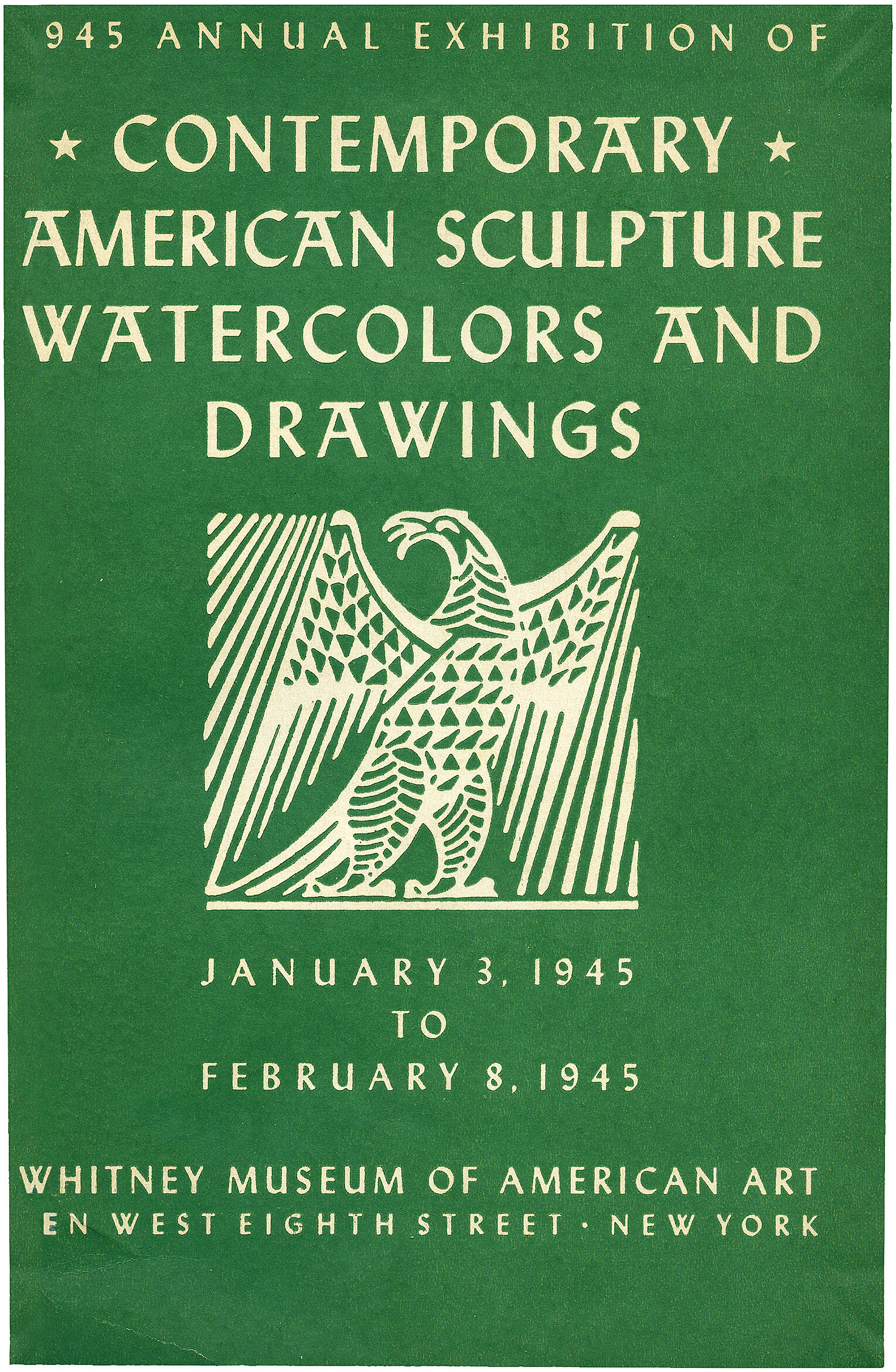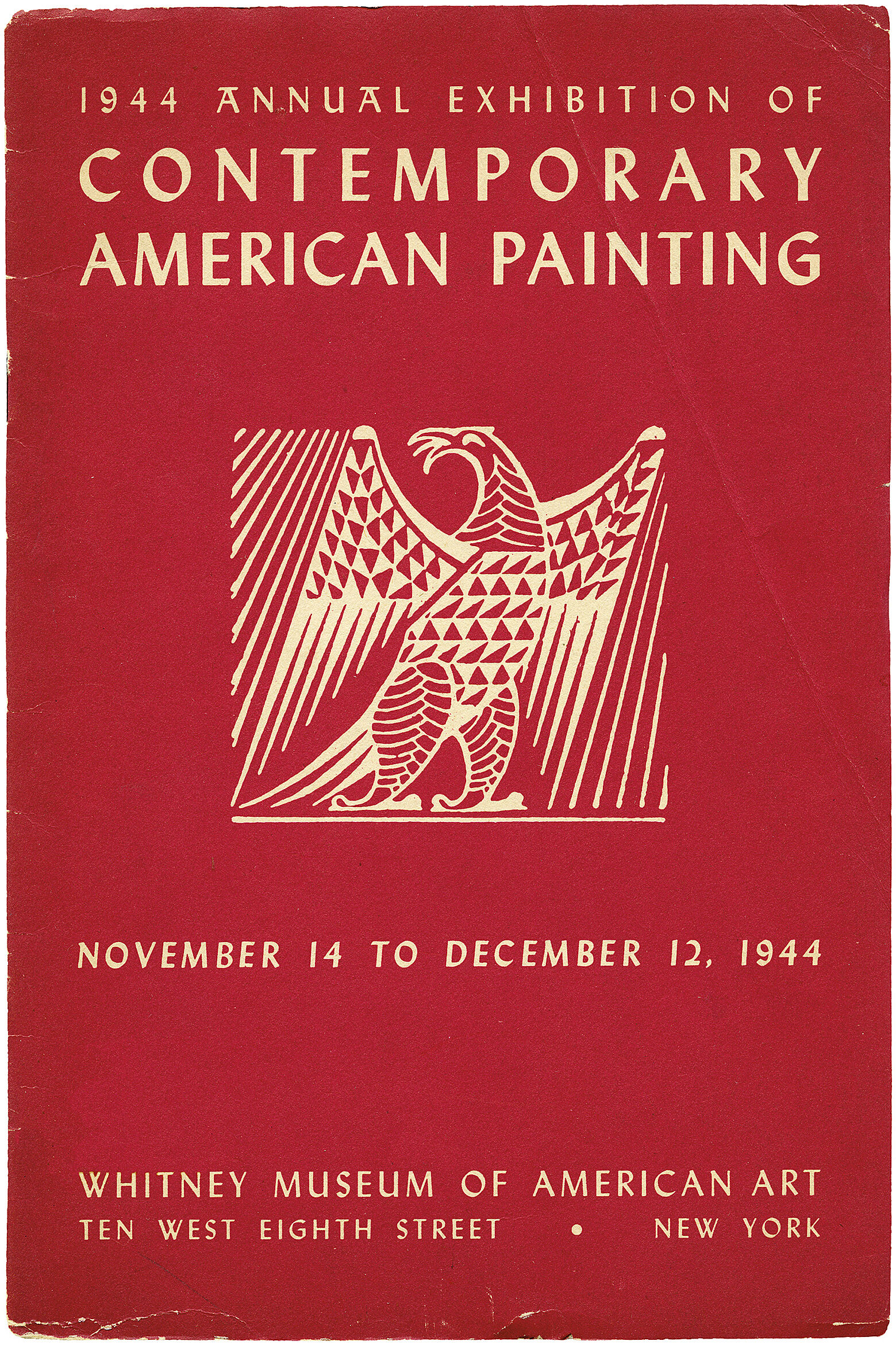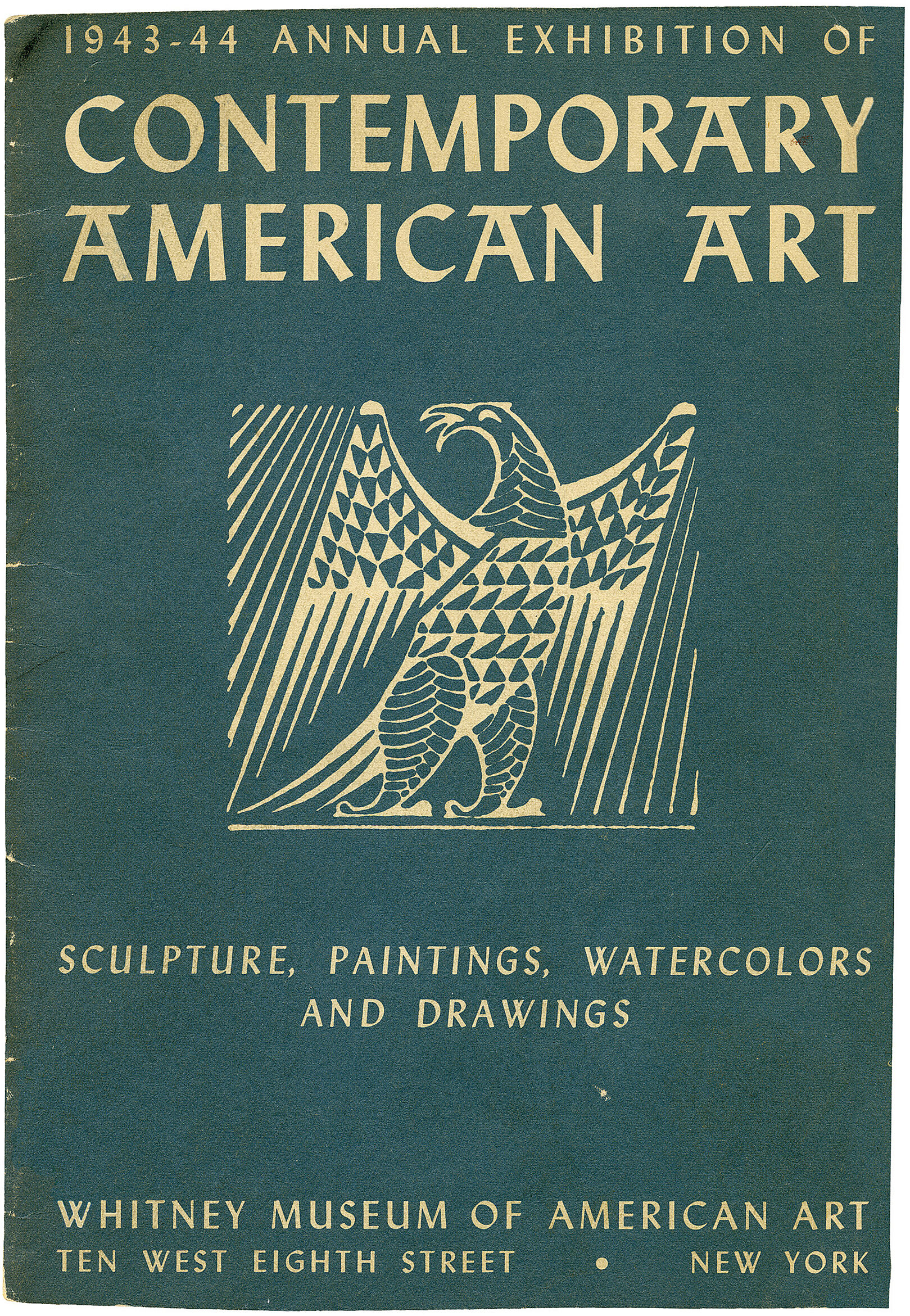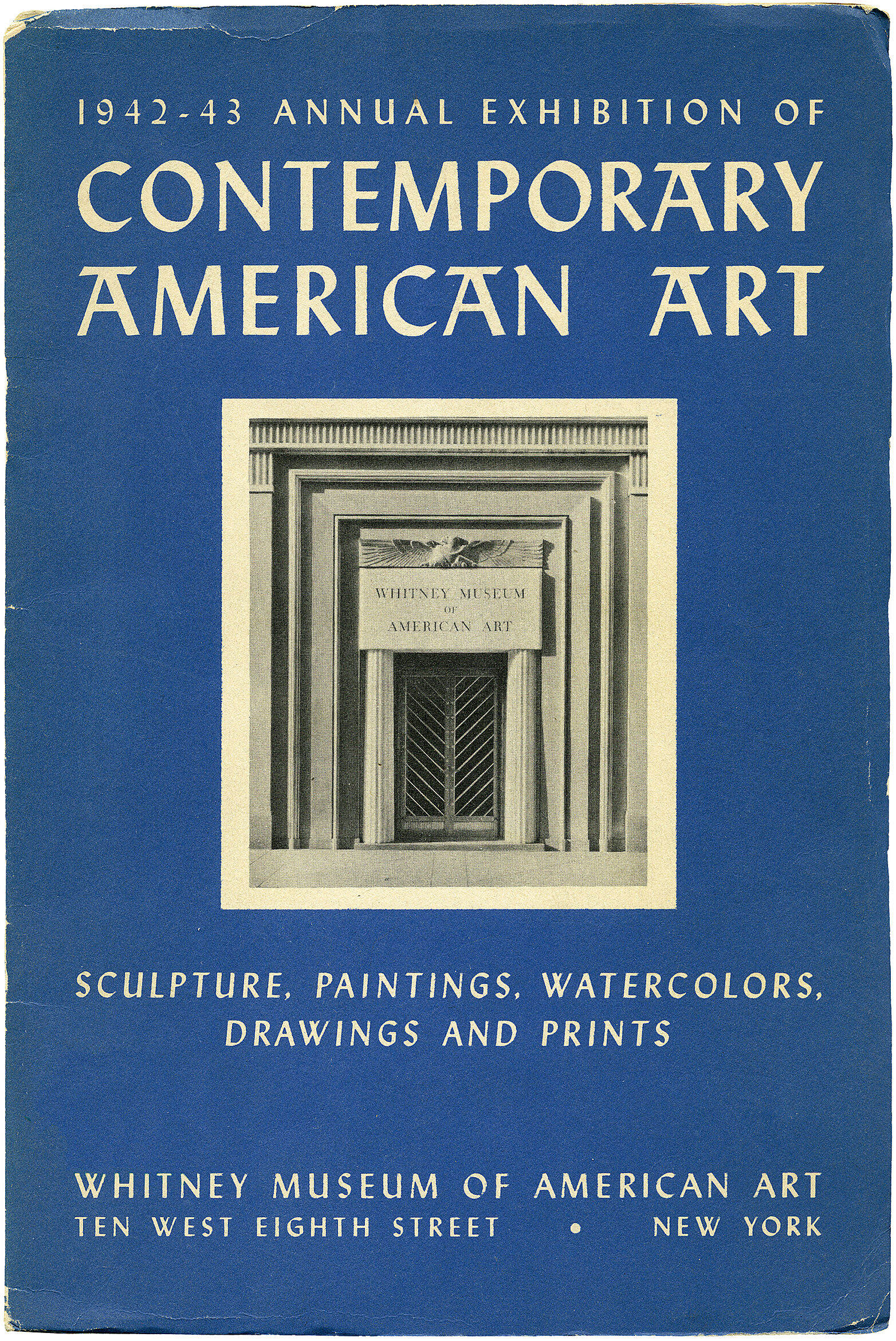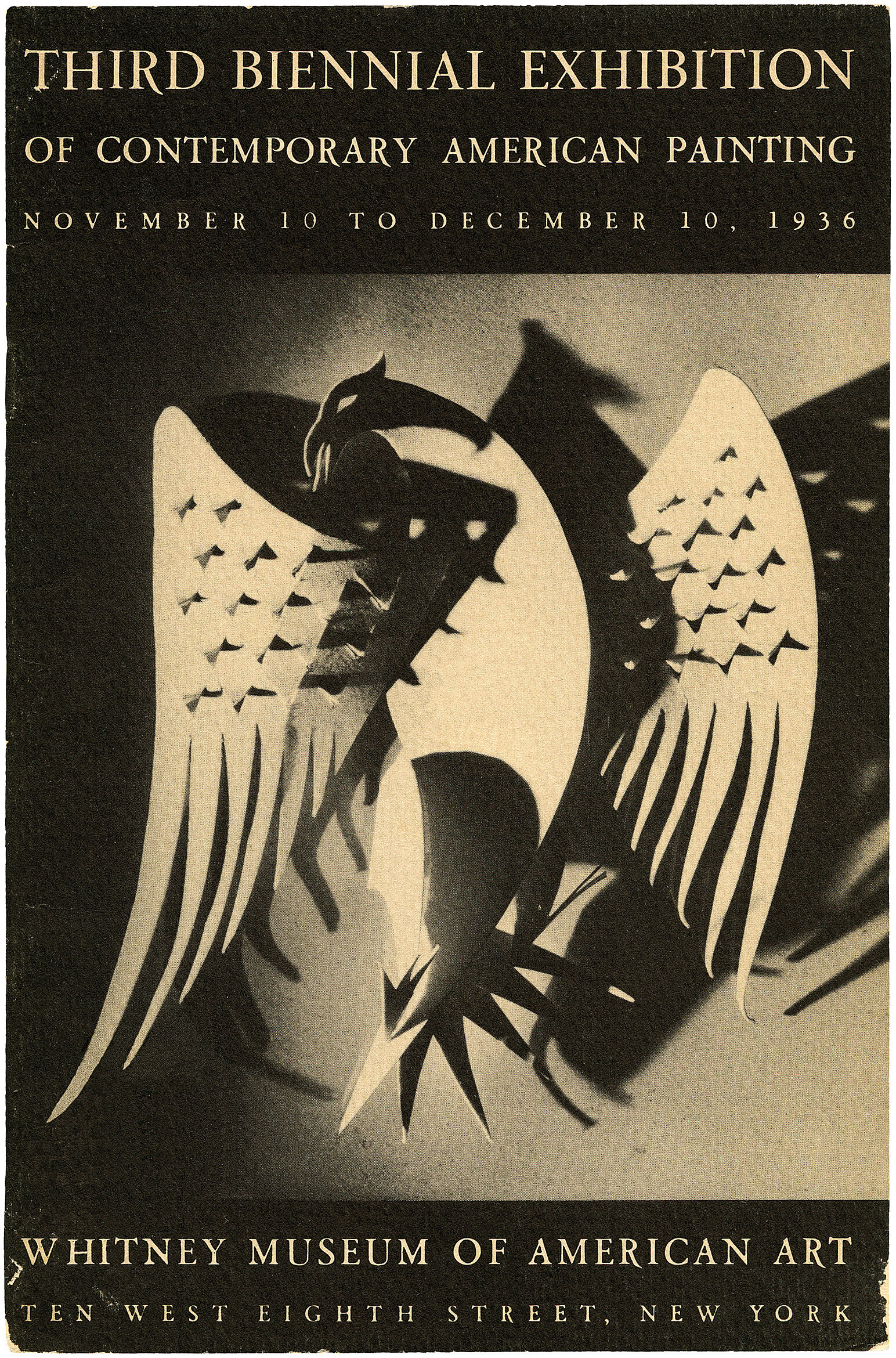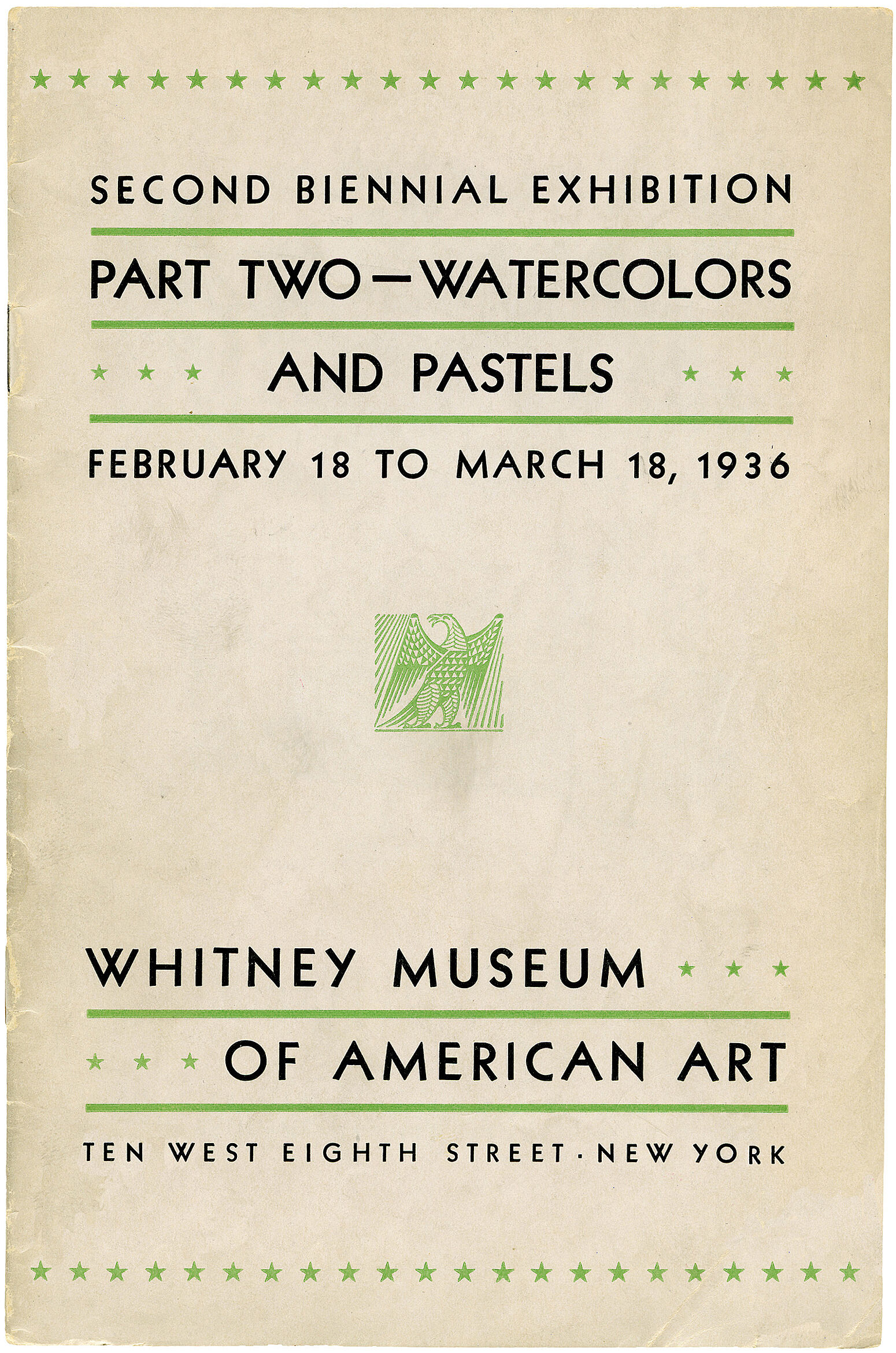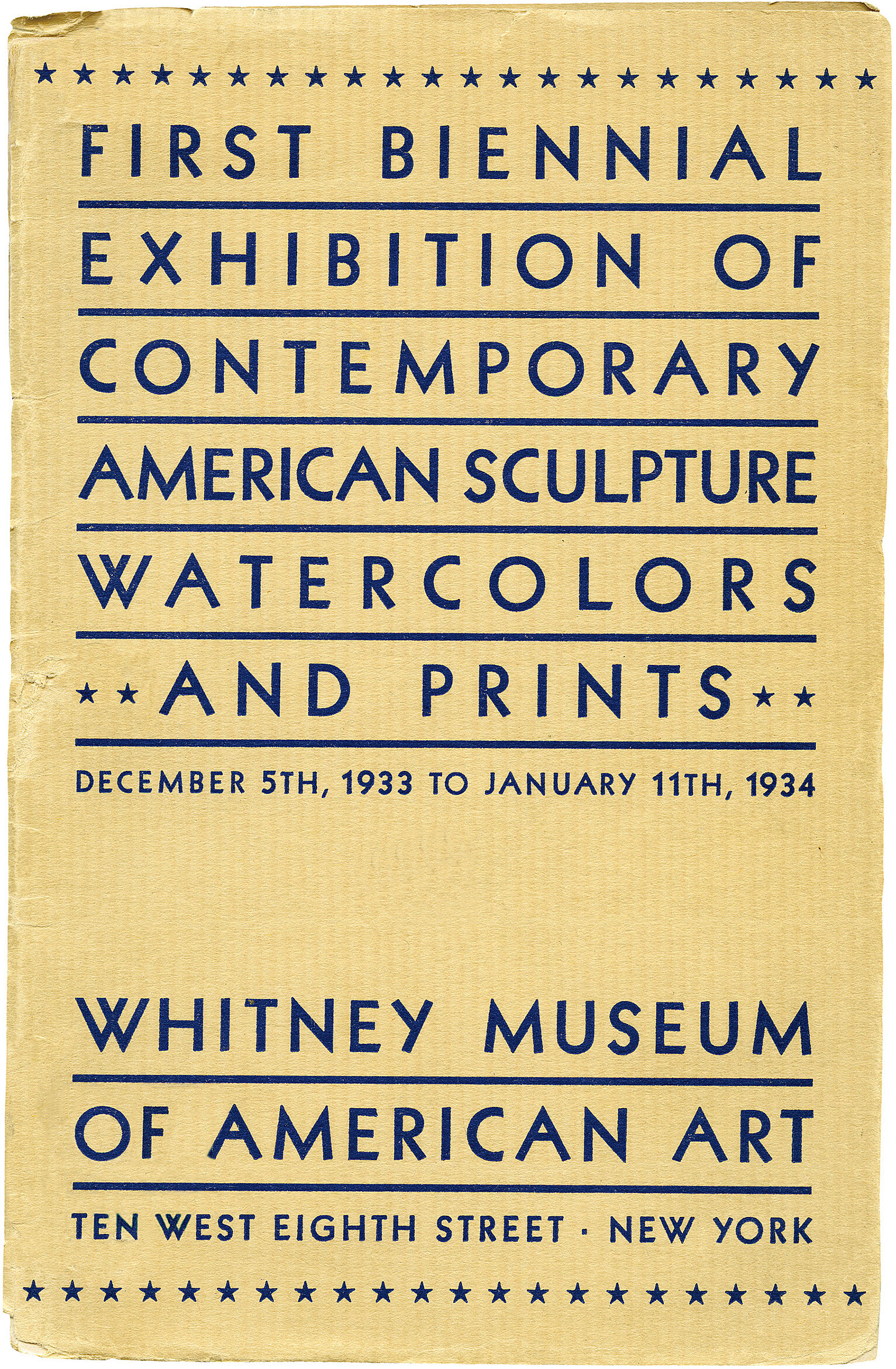John Marin
1870–1953
One of the most revered watercolorists in the history of American art, John Marin was a central member of the vanguard group of modern artists associated in the early decades of the twentieth century with Alfred Stieglitz and his New York galleries. Dividing his time between his native New Jersey and the New England coast, especially his beloved Maine, Marin focused on painting the urban and rural American landscape. The architecture of lower Manhattan occupied him especially at the outset of his career, after he returned in 1911 from a prolonged European sojourn. In the soaring structures of New York— especially landmarks like the Woolworth Building and the Brooklyn Bridge—Marin found the excitement and optimistic promise of modernity. Using Cubist geometries and expressionist brushwork, he portrayed the city as a living entity, an organic, rhythmic being governed by spatial tensions that he described as “warring, pushing, pulling forces.”
Region of Brooklyn Bridge Fantasy, a later meditation on the subject of the Brooklyn Bridge, continues to emphasize the city’s energetic dynamism. Yet the composition shifts away from Marin’s early graphic style toward a weightier handling of paint and a greater stress on underlying structure—developments that may reflect his contemporaneous experiments with oil paint, which he began using in 1925, as well as his response to the dramatic architectural transformations New York was undergoing in the 1930s. By juxtaposing the dense band of skyline and radiant sun with the bridge’s delicate cables, which fan out in staggered diagonals across the composition, Marin here transforms the bridge into an ethereal presence—the icon of an earlier world.
Introduction
John Marin (December 23, 1870 – October 2, 1953) was an early American modernist visual artist. He is known for his abstract landscape paintings and watercolors.
Wikidata identifier
Q666171
Information from Wikipedia, made available under the Creative Commons Attribution-ShareAlike License . Accessed January 2, 2026.

